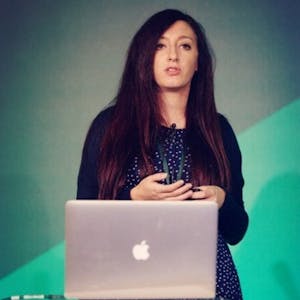245 min
Building Serverless Applications on AWS with TypeScript
Workshop
This workshop teaches you the basics of serverless application development with TypeScript. We'll start with a simple Lambda function, set up the project and the infrastructure-as-a-code (AWS CDK), and learn how to organize, test, and debug a more complex serverless application.
Table of contents: - How to set up a serverless project with TypeScript and CDK - How to write a testable Lambda function with hexagonal architecture - How to connect a function to a DynamoDB table - How to create a serverless API - How to debug and test a serverless function - How to organize and grow a serverless application
Materials referred to in the workshop:
https://excalidraw.com/#room=57b84e0df9bdb7ea5675,HYgVepLIpfxrK4EQNclQ9w
DynamoDB blog Alex DeBrie: https://www.dynamodbguide.com/
Excellent book for the DynamoDB: https://www.dynamodbbook.com/
https://slobodan.me/workshops/nodecongress/prerequisites.html
Table of contents: - How to set up a serverless project with TypeScript and CDK - How to write a testable Lambda function with hexagonal architecture - How to connect a function to a DynamoDB table - How to create a serverless API - How to debug and test a serverless function - How to organize and grow a serverless application
Materials referred to in the workshop:
https://excalidraw.com/#room=57b84e0df9bdb7ea5675,HYgVepLIpfxrK4EQNclQ9w
DynamoDB blog Alex DeBrie: https://www.dynamodbguide.com/
Excellent book for the DynamoDB: https://www.dynamodbbook.com/
https://slobodan.me/workshops/nodecongress/prerequisites.html































